- Home
- James Rollins
The Eye of God Page 2
The Eye of God Read online
Page 2
Am I up for this task, my Lord?
He must be.
At last, Vigor reached the university’s faculty wing and spotted a familiar figure leaning against his office door. His niece had beaten him here. She must have come straight from work. She still wore her Carabinieri uniform of dark navy slacks and jacket, both piped in scarlet, with silver epaulettes on her shoulders. Not yet thirty, she was already a lieutenant for the Comando Carabinieri Tutela Patrimonio Culturale, the Cultural Heritage Police, who oversaw the trafficking of stolen art and relics.
Pride swelled through him at the sight of her. He had summoned her as much out of love as for her expertise in such matters. He trusted no one more than her.
“Uncle Vigor.” Rachel gave him a quick hug. She then leaned back, finger-combing her dark hair back over one ear and appraising him with those sharp caramel eyes. “What was so urgent?”
He glanced up and down the hall, but at this hour on a Sunday, no one was about, and all of the offices appeared dark. “Come inside and I’ll explain.”
Unlocking the door, he ushered her across the threshold. Despite his esteemed position, his office was little more than a cramped cell, lined by towering cases overflowing with books and stacks of magazines. His small desk rested against the wall under a window as thin as a castle’s arrow slit. The newly risen moon cast a silver shaft into the chaos found here.
Only after they were both inside and the door closed did he risk clicking on a lamp. He let out a small sigh of relief, reassured and comforted by the familiar.
“Help me clear a space on my desk.”
Once that was done, Vigor placed his burden down and folded back the brown parcel wrap, revealing a small wooden crate.
“This arrived for me earlier today. With no return address, only the name of the sender.”
He turned back a corner of the wrapping to show her.
“Father Josip Tarasco,” Rachel read aloud. “Am I supposed to know who that is?”
“No, nor should you.” He stared over at her. “He was declared dead over a decade ago.”
Her brows pinched, and her posture stiffened. “But the package is too pristine to have been lost in the mail for that long.” She turned that discerning gaze back on him. “Could someone have forged his name as some cruel hoax?”
“I don’t see why. In fact, I think that’s why the sender addressed this package by hand. So I could verify it came from Father Tarasco. We were dear friends. I compared the writing on the parcel to a smattering of old letters still in my possession. The handwriting matched.”
“So if he’s still alive, why was he declared dead?”
Vigor sighed. “Father Tarasco vanished during a research trip to Hungary. He was preparing a comprehensive paper on the witch hunts there during the early eighteenth century.”
“Witch hunts?”
Vigor nodded. “Back in the early 1700s, Hungary was beset by a decade-long drought, accompanied by famine and plague. A scapegoat was needed, someone to blame. Over four hundred accused witches were killed in a span of five years.”
“And what about your friend? What became of him?”
“You must understand, when Josip left for Hungary, the country had only recently shaken free of Soviet control. It was still a volatile time there, a dangerous place to be asking too many questions, especially in rural areas. The last I heard from him was a message left on my machine. He said he was on to something disturbing concerning a group of twelve witches—six women and six men—burned in a small town in southern Hungary. He sounded both scared and excited. Then nothing after that. He was never heard from again. Police and Interpol investigated for a full year. After an additional four years of silence, he was finally declared dead.”
“So then he must have gone into hiding. But why do that? And more important, why surface a decade later, why now?”
With his back to his niece, Vigor hid a smile of pride, appreciating Rachel’s ability to get to the heart of the matter so quickly.
“The answer to your last question seems evident from what he sent,” he said. “Come see.”
Vigor took a deep breath and opened the hinged lid of the crate. He carefully removed the first of the package’s two objects and placed it in the shaft of moonlight atop his desk.
Rachel took an involuntary step backward. “Is that a skull? A human skull?”
“It is.”
She moved past her initial surprise to step closer. She quickly noted the hen-scratched inscription across the bone of the cranium, following the spiral of its course with a fingertip without touching.
“And this writing?” she asked.
“Jewish Aramaic. I believe this relic is an example of early Talmudic magic practiced by Babylonian Jews.”
“Magic? Like witchcraft?”
“In a way. Such spells were wards against demons or entreaties for help. Over the years, archaeologists have unearthed thousands of such artifacts—mostly incantation bowls, but also a handful of skulls like this. The Berlin museum holds two such relics. Others are in private hands.”
“And this one? You said Father Tarasco had an interest in witches, which I assume extended to an interest in occult objects.”
“Perhaps. But I don’t think this one is authentic. The practice of Talmudic magic started in the third century and died out by the seventh.” Vigor waved his hand over the skull as if casting his own spell. “I suspect this artifact is not that old. Maybe thirteenth or fourteenth century at best. I’ve sent a tooth to the university lab to confirm my estimate.”
She slowly nodded, contemplating in silence.
“But I also studied the writing here,” he continued. “I’m well familiar with this form of Aramaic. I found many blatant mistakes in the transcription—reversed diacritics, wrong or missing accent marks—as if someone made a poor copy of the original inscription, someone who had no true understanding of this ancient language.”
“So the skull is a forgery then?”
“In truth, I suspect there was no foul intent in its crafting. I think its forging was less about deception than it was about preservation. Someone feared the knowledge found here might be lost, so he or she hand made copies, trying to preserve something more ancient.”
“What knowledge?”
“I’ll get to that in a moment.”
He reached into the crate and removed the second object and placed it beside the skull on the table. It was an ancient book, as wide as his outstretched hand and twice as tall. It was bound in rough leather, the pages secured by crude stitches of thick cord.
“This is an example of anthropodermic bibliopegy,” he explained.
Rachel screwed up her face. “And that means . . . ?”
“The book is bound in human skin and sewn with sinew of the same.”
Rachel took a step away again, only this time she didn’t return to the desk. “How can you know that?”
“I can’t. But I forwarded a sample of the leather to the same lab as the skull, both to test its age and its DNA.” Vigor picked up the macabre volume. “But I’m sure I’m correct. I examined this under a dissection microscope. Human pores are distinctly different in size and even shape from that found in pigskin or calfskin. And if you look closer, in the center of the cover—”
He drew a fingernail along what appeared to be a deep crease in the center of the cover.
“Under proper magnification, you can still make out the follicles of eyelashes.”
Rachel paled. “Lashes?”
“On the cover is a human eye, sewn shut with finer threads of sinew.”
Visibly swallowing, his niece asked, “So what is this? Some text of the occult?”
“I thought as much, especially considering Josip’s interest in the witches of Hungary. But no, it’s not some demonic manuscript. Though in some circles, the text is considered blasphemous.”
He carefully parted the cover, cautious not to overly stress the binding. He revealed pages written in L
atin. “It’s actually a Gnostic book of the Bible.”
Rachel tilted her head, well versed in Latin, and translated the opening words “ ‘These are the secret sayings which the living Jesus spoke . . .’ ” She glanced over at him, recognizing those words. “It’s the Gospel of Thomas.”
He nodded. “The saint who doubted Christ’s resurrection.”
“But why is it wrapped in human skin?” she said with disgust. “Why would your missing colleague send you such ghoulish items?”
“As a warning.”
“A warning against what?”
Vigor returned his attention to the skull. “The incantation written here is a plea to God to keep the world from ending.”
“While I certainly appreciate that plea, what does—?”
He cut his niece off. “The prophetic date for that coming apocalypse is also written atop the skull, in the center of the spiraling inscription. I converted that figure from the ancient Jewish calendar to today’s modern accounting.” He touched the center of the spiral. “This is why Father Josip came out of hiding and sent these items to me.”
Rachel waited for him to explain.
Vigor glanced out the window to the comet glowing in the night sky, bright enough to shame the moon. With that portent of doom hanging there, a shiver of certainty rang through him. “The date for the end of the world . . . it’s in four days.”
FIRST
CRASH & BURN
Σ
1
November 17, 7:45 A.M. PST
Los Angeles AFB
El Segundo, California
Panic had already begun to set in.
From the observation deck above the control room, Painter Crowe read the distress in the sudden cessation of idle chatter among the technicians in the room. Nervous glances spread up the chain of command and across the floor of the Space and Missile Systems Center. Only the base’s top brass were in attendance at this early hour, along with a few heads of the Defense Department’s research divisions.
The floor below them looked like a scaled-down version of NASA’s flight control room. Rows of computer consoles and satellite control desks spread outward from a trio of giant LCD screens affixed to the back wall. The centermost screen showed a map of the world, traced with glowing lines that tracked the trajectories of a pair of military satellites and the path of the neighboring comet.
The two flanking screens showed live feed from the satellites’ cameras. To the left, a curve of the earth slowly churned against the backdrop of space. To the right, the glowing blaze of the comet’s tail filled the screen, casting a veil over the stars beyond it.
“Something’s gone wrong,” Painter whispered.
“What do you mean?” His boss stood beside him atop the observation deck.
General Gregory Metcalf was the head of DARPA, the Defense Department’s research-and-development agency. Dressed in full uniform, Metcalf was in his fifties, African-American, and a West Point grad.
In contrast, Painter simply sported a black suit, made more casual with a pair of cowboy boots. They were a gift from Lisa, who was on a research trip in New Mexico. Half Native American, he probably should have balked at wearing the boots, but he liked them, especially as they reminded him of his fiancée, gone now a full month.
“Something’s got the OSO spooked,” Painter explained, pointing to the operations support officer in the second row of consoles down below.
The lead mission specialist moved over to join his colleague at that station.
Metcalf waved dismissively. “They’ll handle it. It’s their job. They know what they’re doing.”
The general promptly returned to his conversation with the commander of the 50th Space Wing out of Colorado Springs.
Still concerned, Painter kept a keen eye on the growing anxiety below. He had been invited here to observe this code-black military mission not only because he was the director of Sigma, which operated under the aegis of DARPA, but also because he had personally engineered a piece of hardware aboard one of the two military satellites.
The pair of satellites—IoG-1 and IoG-2—had been sent into space four months ago. The acronym for the satellites—IoG—stood for Interpolation of the Geodetic Effect, a name originally coined by the military physicist who had engineered this project for a gravitational study. He had intended to do a complete analysis of the space-time curvature around the earth to aid in satellite and missile trajectory.
While already an ambitious undertaking, the discovery of the comet by a pair of amateur astronomers two years ago quickly shifted the project’s focus—especially after an anomalous energy signature had been detected out there.
Painter glanced sidelong to his neighbor on his left, noting the lithe form of the researcher from the Smithsonian Astrophysical Observatory.
Only twenty-three, Dr. Jada Shaw was tall, with a runner’s lean physique. Her skin was a flawless dark mocha, her black hair trimmed short, highlighting the long curve of her neck. She stood in a white lab coat and jeans, with her arms crossed, nervously chewing the edge of her thumbnail.
The young astrophysicist had been whisked from Harvard seventeen months ago and ensconced in this code-black military venture. Clearly she still felt out of her league, though she was doing her best to hide it.
It was unfortunate. She had no reason to be so nervous. She had already won international recognition for her work. Using quantum equations—calculations well above Painter’s intellectual pay grade—she had crafted an unusual theory concerning dark energy, the mysterious force that made up three-quarters of the universe and was responsible for its accelerating cosmic expansion.
Further proving her prowess, she had been the only physicist to note the small anomalies in the approach of this celestial visitor blazing in the night sky—a comet designated as IKON.
A year and a half ago, Dr. Shaw had tapped into the digital feed of the new Dark Energy Camera, a 570-megapixel array engineered by the Fermilab here in the States and installed at a mountaintop observatory in Chile. Using that camera, Dr. Shaw had tracked the comet’s passage. It was there that she had discovered anomalies that she believed might be proof that the comet was shedding or disturbing dark energy in its wake.
Her work quickly became cloaked under the guise of national security. A new energy source such as this had vast and untapped potential—both economically and militarily.
From that moment forward, the ultrasecret IoG project was repurposed for one goal only: to study the potential dark energy of the comet. The plan was to fly IoG-2 across the comet’s blazing tail, where it would attempt to absorb that anomalous energy detected by Dr. Shaw and transmit it back to its sister craft orbiting the earth.
Luckily, to accomplish this task, engineers had to only slightly modify the earlier mission satellite. A part of its original design included a perfect sphere of quartz buried in its heart. The plan had been to set that sphere to spinning once the satellite was in orbit, creating a gyroscopic effect that could be used to map the curve of space-time around the mass of Earth. If the experiment was successful, the beam of dark energy from one spacecraft to the other should cause a minute disturbance in that curve of space-time.
It was a bold experiment. Even the acronym IoG was now jokingly referred to as the Eye of God. Painter appreciated the new nickname, picturing that whirling perfect sphere as it waited to peer into the mysteries of the universe.
The lead specialist called out. “Spacecraft will be entering the tail in ten!”
As the final countdown began, Dr. Shaw’s eyes remained fixed to the flow of data on the giant screen.
“I hope you were mistaken earlier, Director Crowe,” she said. “About something going wrong here. Now is not the time for mistakes, not when we’re tapping into energy connected to the birth of our universe.”
Either way, Painter thought, there was no turning back now.
7:55 A.M.
Over the course of six painstaking minutes, the flight p
ath of IoG-2 slowly vanished deeper into the ionizing stream of gas and dust. The screen to the right—running live feed from the satellite’s camera—was a complete whiteout. They were now flying blind, entirely reliant on telemetry data.
Painter tried taking in everything at once, catching the room’s excitement, sensing the historical significance of this moment.
“I’m registering an energy spike in IoG-2!” the EECOM tech called from his station.
A smatter of small cheers broke out, but the pressure of the moment quickly quashed them. The reading could be an error.
All eyes swung to another console, to the aerospace engineer monitoring IoG-1. He shook his head. There seemed to be no evidence that the energy picked up by the first satellite had been transmitted to its Earth-orbiting twin—then suddenly the engineer jerked to his feet.
“Got something!” he yelled.
The SMC control officer hurried over to his side.
As everyone waited for confirmation, Dr. Shaw pointed to the world map, to the scroll of telemetry data. “So far it looks promising.”
If you say so . . .
The crawl of incoming data was incomprehensible to him. And it only continued to flow faster. After another tense minute, the flood of data grew to a blur.
The EECOM tech popped to his feet. Warnings and error messages flashed on his screens as he continued to monitor IoG-2’s passage through the comet’s tail. “Sir, energy levels here are off the map now, redlining across the board! What do you want me to do?”
“Shut it down!” the control officer commanded.
Still standing, the EECOM tech typed rapidly. “No can do, sir! Satellite navigation and control are not responding.”
To the right, the giant screen suddenly went black.
“Lost camera feed now, too,” the tech added.
Painter pictured IoG-2 sailing from here out into space, a cold and dark chunk of space debris.

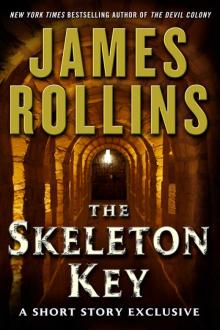 The Skeleton Key
The Skeleton Key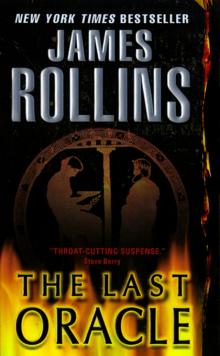 The Last Oracle
The Last Oracle The Judas Strain
The Judas Strain Black Order
Black Order Sandstorm
Sandstorm Ghost Ship
Ghost Ship The Devil Colony
The Devil Colony Subterranean
Subterranean The Doomsday Key
The Doomsday Key The 6th Extinction
The 6th Extinction Bloodline
Bloodline Jake Ransom and the Howling Sphinx
Jake Ransom and the Howling Sphinx The Midnight Watch
The Midnight Watch Map of Bones
Map of Bones The Demon Crown
The Demon Crown Deep Fathom
Deep Fathom Sigma Guide
Sigma Guide Kowalski's in Love
Kowalski's in Love Jake Ransom and the Skull King's Shadow
Jake Ransom and the Skull King's Shadow Excavation
Excavation The Seventh Plague
The Seventh Plague Altar of Eden
Altar of Eden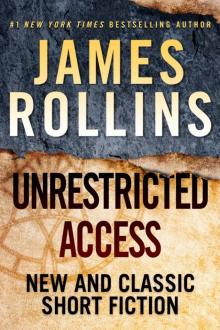 Unrestricted Access: New and Classic Short Fiction
Unrestricted Access: New and Classic Short Fiction Indiana Jones and the Kingdom of the Crystal Skull
Indiana Jones and the Kingdom of the Crystal Skull Crucible
Crucible The Eye of God
The Eye of God The Bone Labyrinth
The Bone Labyrinth The Last Odyssey: A Thriller
The Last Odyssey: A Thriller Unrestricted Access
Unrestricted Access Amazonia
Amazonia Blood Brothers: A Short Story Exclusive
Blood Brothers: A Short Story Exclusive Map of Bones: A Sigma Force Novel
Map of Bones: A Sigma Force Novel The Skeleton Key (sigma force)
The Skeleton Key (sigma force)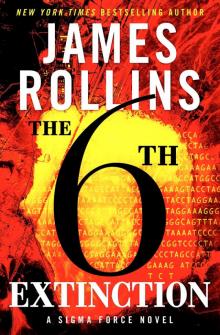 Sigma Force 10 - The Sixth Extinction
Sigma Force 10 - The Sixth Extinction Innocent Blood
Innocent Blood Map of Bones sf-2
Map of Bones sf-2 The Eye of God: A Sigma Force Novel
The Eye of God: A Sigma Force Novel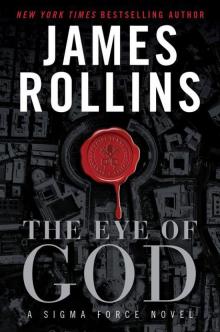 The Eye of God: A Sigma Force Novel sf-9
The Eye of God: A Sigma Force Novel sf-9 The Pit
The Pit Indiana Jones and the The Kingdom Of The Crystal Skull
Indiana Jones and the The Kingdom Of The Crystal Skull The Last Oracle (2008) sf-5
The Last Oracle (2008) sf-5 City of Screams
City of Screams The Doomsday Key and The Last Oracle with Bonus Excerpts
The Doomsday Key and The Last Oracle with Bonus Excerpts The Judas Strain sf-4
The Judas Strain sf-4 Blood Infernal
Blood Infernal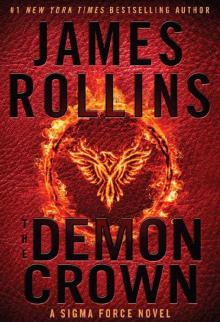 The Demon Crown: A Sigma Force Novel
The Demon Crown: A Sigma Force Novel War Hawk: A Tucker Wayne Novel
War Hawk: A Tucker Wayne Novel SANDSTORM sf-1
SANDSTORM sf-1 Bloodline: A Sigma Force Novel
Bloodline: A Sigma Force Novel Amazonia: a novel
Amazonia: a novel The Last Oracle: A Sigma Force Novel
The Last Oracle: A Sigma Force Novel City of Screams (the order of the sanguines)
City of Screams (the order of the sanguines)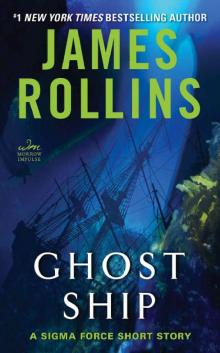 Ghost Ship: A Sigma Force Short Story
Ghost Ship: A Sigma Force Short Story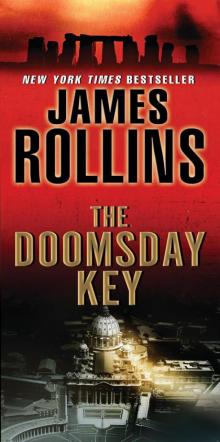 The Doomsday Key: A Sigma Force Novel
The Doomsday Key: A Sigma Force Novel